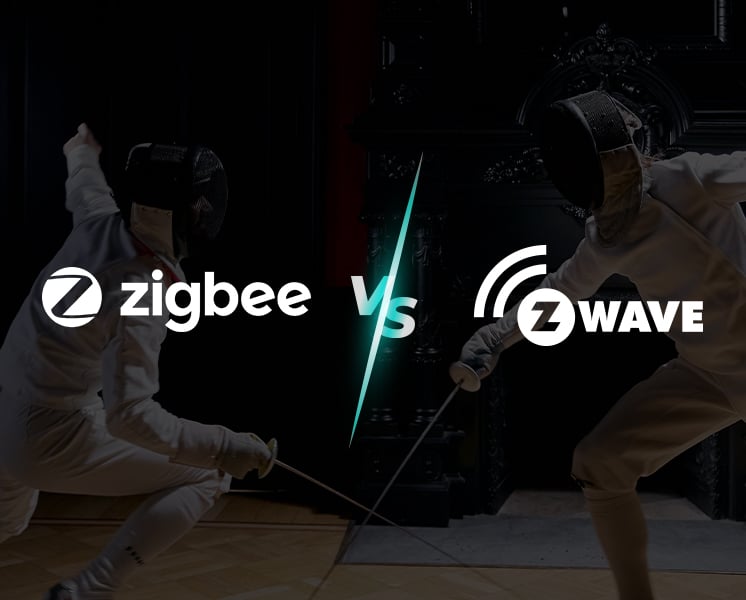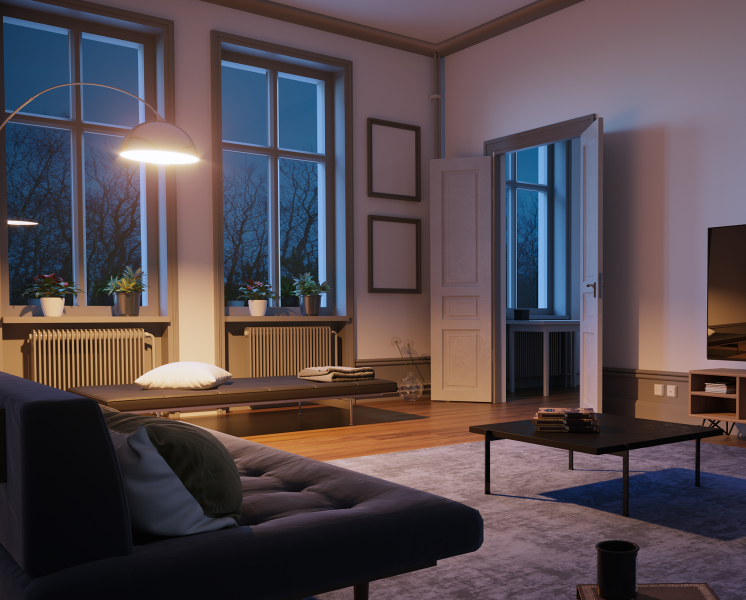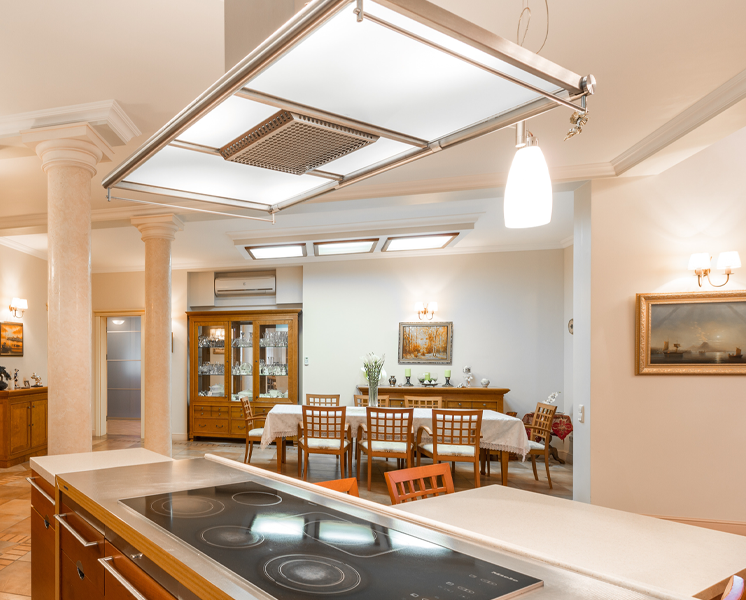Smart home technology is rapidly evolving, and as more consumers seek cost-effective, energy-efficient and environmentally-conscientious ways of living, the options of smart devices are proliferating at warp speed. Case in point: The ZigBee protocol is recognized globally by systems installers as reliable and secure — and it’s the brains behind thousands of products.
You need a smart home hub that will work with Samsung SmartThings devices configured to your ADT security service. But how do you configure your security service to your Google home and Amazon Echo or Alexa to coordinate with your ZigBee lights and blinds?
When you add the other major manufacturers of smart home devices — like Hue (Phillips), Alexa (Amazon), Google Assistant and Z-Wave, to name a few — you see the need for your hub to be more than smart. A zigbee hub that communicates with any smart device is bound to be the most cost-effective and satisfying for customers.
How do you choose the best solution to enable your Tuya ZigBee 3.0 Hub Gateway to work seamlessly with any other smart home device? We have a few ideas.
Connect all your smart devices through one ZigBee hub
What would a smart home zigbee hub that coordinates all your connected devices — ring alarm, smart speaker, Google Home, smart light, sensors, Apple TV, Alexa app and more — be able to do that a ZigBee hub can’t do?
ZigBee is a standard protocol that is certified by the Connectivity Standards Alliance and follows universal open standards to ensure secure connectivity and interaction with any sensor application. The ZigBee standard leverages the Internet of Things (IoT) to enable communication over a wider range using low power, like the zig-zag of bees in search of pollen.
However, the field is awash in options and not all of them connect as seamlessly with ZigBee. A smart hub that can link a ZigBee hub with any smart home device will be able to do the following:
- Provide a low-power, high energy-efficiency solution.
- Meet the connectivity requirements of any space.
- Enable entry to smart security and home automation for everyone.
- Eliminate app confusion for consumers.
Designers have already developed a solution to the erstwhile compatibility conundrum of earlier generation smart devices: system centers.
Get a comprehensive smart home controller
Home automation of the major systems — heating, cooling, security and entertainment — in your home or complex requires something more comprehensive to operate hubs connecting devices across living and working space systems. That interoperability across a home or building is what makes a system center a game-changer.
Smart center vs. smart ZigBee hub
The main difference between a smart zigbee hub and a smart center is that the center controls device activity and the hub enables the actions to operate harmoniously.
For example, in an elder care setting, a controller such as the Evvr Center orchestrates how various smart devices cooperate to assist a resident who falls. A ZigBee hub makes the connection between a movement sensor that picks up sudden movement and a wall camera that shows a resident falling. Then, an app alert prompts action from the eldercare staff on duty.
In this example, a smart home hub connects devices, while the Evvr Center or ZigBee Gateway Controller directs the flow of communication between devices to provide a safer living and working environment for everyone.
Smart center feature sets
Compact, cost effective : Evvr Pad S
You’re interested in an automated environment for your home, office, hotel or complex. You want options, not app confusion.
As many system integrators know, the stiff competition among smart device and hub brands can be overwhelming for consumers. Also, brand specifications can also lead to issues with security. That’s why a ZigBee device is a popular choice for many smart home enthusiasts. ZigBee’s compatibility across multiple brands is a huge bonus for consumers and installers.
Increasingly, smart environments involve motion sensors that pick up your routine and can bring your smart home to life. For some of these sensors, the data used to inform your lights to dim or your security alarm to activate is transmitted wirelessly through Wi-Fi or Bluetooth. The ZigBee standard is compatible with Wi-Fi and Bluetooth-enabled devices such as Google Home. However, the most secure way to share data across your smart home system isn’t on the cloud or over broadband but rather on-premises.
An interface for a ZigBee smart home
Consider what it takes to orchestrate a pleasing environment – lighting, temperature, background music – for a family dinner or a high-powered board meeting. Even with today's technology, there are potentially a lot of buttons to push. Imagine using your voice from the kitchen to lower the blinds and dim the lights in the dining room. Eliminate the need to access several apps to create an inviting setting in a hotel sitting room or a safer one in a child’s space. Manage both easily with one interface, like the Evvr Pad S.
Combining form with function, the in-wall touchscreen Evvr Pad S comes equipped with a ZigBee Gateway for controlling your space’s smart lighting, HVAC, security and home entertainment. What’s more, the device can blend into your decor. You can even add your own images to the screen. For those considering how to “manage” their smart home, an easy-to-use, energy-efficient solution is a central controller with a built-in smart zigbee hub using the ZigBee standard.
Powerful, intelligent: Evvr Center Lite
For those looking for a truly intelligent home automation controller that won’t limit them to a particular brand, a specific communication protocol or even the use of their hands, the Evvr Center Lite is a powerful solution that system integrators and single-home and apartment dwellers can enjoy now and in the future.
Not all smart home automators require large smart controllers that can accommodate multiple modules (4G/5G, Bluetooth, Z-Wave and ZigBee) for commercial buildings or multi-unit living spaces. However, consumers in relatively small spaces still want a smart center that can plug in to their existing home automation system and meet future compatibility or settings requirements.
The Evvr Center Lite was created to be a compact and powerful alternative to a larger smart controller like the Evvr Center, Google Nest or Apple HomeKit. These more compact, lightweight devices are also reliable, secure and compatible with ZigBee and other popular protocols. Plus, they provide access to your smart home environment from your TV, mobile device or laptop.
In addition, developers can customize the Evvr Center Lite’s drivers to function with existing and emerging smart devices. Firmware can be updated over-the-air using t\he Evvr App. The design of Evvr Center Lite takes into account the desire for choice without the overwhelm or issues that arise from much too much app confusion.
Thanks to innovators around the ZigBee protocol, system integrators, developers and home automation enthusiasts can look forward to a brighter “futuristic” home with less confusion, more reliability and greater convenience.
Contact us for more information about ZigBee hub powered and compatible Evvr smart home products.











